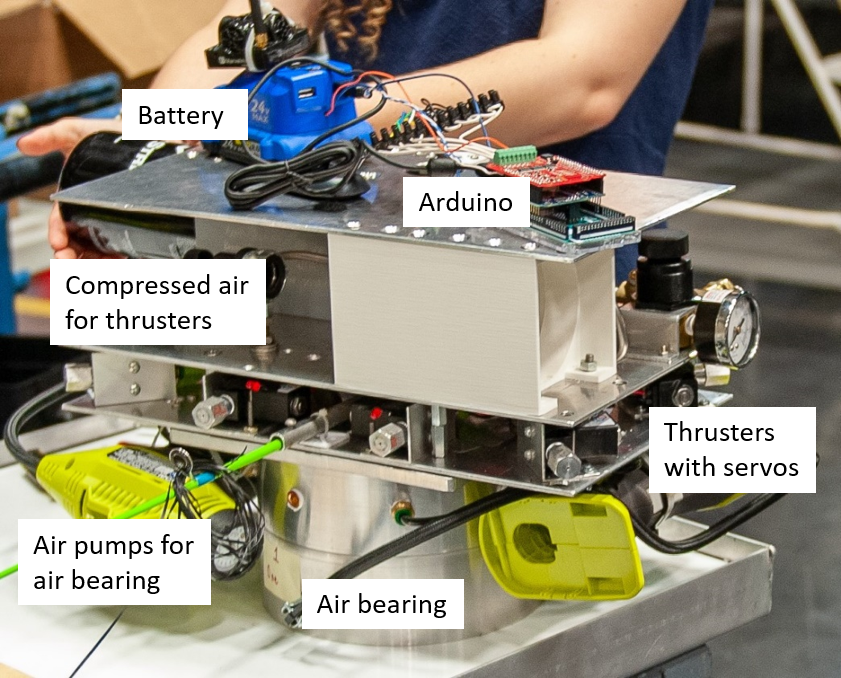Wireless Robotic Tether Deployment System
Summer 2019NASA MSFC, Sensors & Guidance, Navigation, and Control Team

Overview
During the summer of 2019, I worked at the “Flat Floor” Lab at NASA MSFC, where a team of three interns and I developed a system of tether-deployment modules that would be used to simulate deep-space tether tension controls systems. By allowing compressed air to exit through small holes in the bottom of an air bearing, objects can float over the extremely flat and level floor (think: a reversed air hockey table). This eliminated frictional force along the floor and allowed for zero-g simulations in three degrees of freedom. Our goal was to create robotic modules that were propelled by compressed air, could be adjusted easily, and could be communicated with remotely.
Contributions
In my role as team lead, I worked closely with our mentor to set project priorities and propose ideas for implementation. I also designed many of the structural components of the modules, including the metal plates that were the base of each level and the cradles that held the compressed air tanks. In my design process, I had to ensure the unit could be taken apart and assembled quickly for rapid prototyping. Specifically, I modeled and printed the cradles so that they could be used at many orientations and so that they allowed the air tanks to easily enter and leave. I also worked with the lab technician to machine the plates to our desired dimension. The end result of our team’s effort was a module that could be remotely operated by an Xbox controller, as shown in the video below.